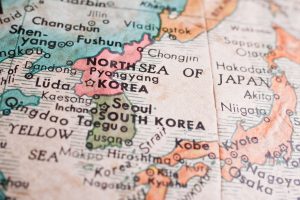North Korea is preparing for a new round of provocative weapons displays such as long-range missile tests and a spy satellite launch, as it ramps up illicit activities to support its fragile economy, South Korea’s intelligence service told lawmakers Thursday.
North Korea’s chronic economic hardships and food shortages have worsened as a result of the COVID-19 pandemic and U.N. sanctions. But it still has conducted a record number of missile tests since last year amid suspicions that its weapons programs are funded by illegal cyber activities and covert exports of banned items.
The National Intelligence Service told lawmakers in a closed-door briefing that North Korea’s economy shrank each year in 2020-2022 and its gross domestic product last year was 12 percent less than in 2016, according to Yoo Sang-bum, one of the lawmakers who attended the briefing.
Outside experts believe North Korea’s current food shortages and economic troubles are the worst since leader Kim Jong Un took power in late 2011. But they say there are no signs of an imminent famine or major public unrest that could threaten Kim’s grip on his 26 million people.
The food problem has been aggravated by attempts by the government to restrict market activities, dwindling personal incomes, and pandemic-related curbs that decimated foreign trade, according to North Korea monitoring groups.
The NIS told lawmakers that in the first half of this year, North Korea covertly exported an estimated 1.7 million tons of coal, up more than 300 percent from a year earlier, and 580 kilograms (1,280 pounds) of gold, up 50 percent, both in violation of U.N. sanctions, according to Yoo.
It estimated that North Korea has stolen more than $1.5 billion in virtual assets since 2015, Yoo said.
The NIS has a spotty record in reporting developments in North Korea, one of the world’s most secretive nations, but is generally more reliable than civilian monitoring groups. Calls to the NIS were unanswered Thursday.
The NIS also said that Kim is expected to resume weapons testing in response to major annual U.S.-South Korean military drills that begin next week and a trilateral U.S.-South Korea-Japan summit at Camp David in the United States this Friday.
The NIS said it has detected unusually heavy activities at a North Korean facility that produces solid-fueled intercontinental ballistic missiles and at another site related to liquid-fueled ICBMs, Yoo said in a televised briefing.
The NIS said North Korea also may try to launch a spy satellite in late August or early September to mark the country’s 75th anniversary on September 9. The NIS said North Korea has been testing an engine for the rocket to be used for the launch and has installed an additional land antenna to receive satellite data, Yoo said.
It would be North Korea’s second attempt to put a satellite into orbit. In its first attempt in late May, the rocket crashed into the ocean soon after liftoff. North Korean state media said it lost thrust following the separation of its first and second stages.
Kim has vowed to develop a number of high-tech weapons systems including a military reconnaissance satellite in response to what North Korea calls U.S. military threats.
North Korea is extremely sensitive to U.S. efforts to bolster its alliances with South Korea and Japan. Since the start of 2022, the North has conducted more than 100 weapons tests, saying it needs to strengthen its own military capabilities in response to expanding U.S.-South Korean exercises, which have included a U.S. aircraft carrier, long-range bombers and a nuclear-armed submarine.
North Korea has demonstrated that its ICBMs have the potential range to reach the U.S. mainland, but many analysts believe it still needs to master some remaining technological challenges. Its shorter-range missiles are capable of targeting South Korea and Japan.
Three of North Korea’s four known types of ICBMs use liquid fuels and the fourth employs solid fuel. Solid-fueled missiles are easier to move and fire quickly, making them more difficult to detect before launch.

































